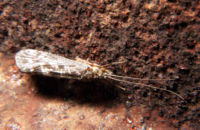
Photo from wikipedia
Hydrological regime alteration in reservoirs is a major anthropogenic disturbance in aquatic ecosystems. We examined winter drawdown effects on macroinvertebrate abundance and community composition in reservoirs while accounting for localized… Click to show full abstract
Hydrological regime alteration in reservoirs is a major anthropogenic disturbance in aquatic ecosystems. We examined winter drawdown effects on macroinvertebrate abundance and community composition in reservoirs while accounting for localized physical variables that might explain additional variability. We hypothesized that drawdown would affect the abundance and the community composition of macroinvertebrates because of the exposure of organisms to freezing and desiccation. However, we expected the detection and magnitude of these responses to be conditional on localized physical habitat variables (i.e., fetch, thermal condition and slope), which also influence abundance and community composition of macroinvertebrates. To test these hypotheses, we applied generalized linear mixed effects models and multivariate analyses to data collected from 118 samples in 15 temperate reservoirs. Sampling stations from reservoirs that experienced high winter drawdown and/or were below the thermocline showed significantly lower macroinvertebrate abundances. Changes in community composition across sites were muted as chironomids, oligochaetes and sphaeriids dominated all assemblages. Decreases in macroinvertebrate abundances with drawdown amplitude and lower temperatures (i.e., hypolimnion) could have implications for food web structure, as they substantially contribute to fish diet, and ecosystem functions (e.g., nutrient cycling).
Journal Title: Hydrobiologia
Year Published: 2019
Link to full text (if available)
Share on Social Media: Sign Up to like & get
recommendations!